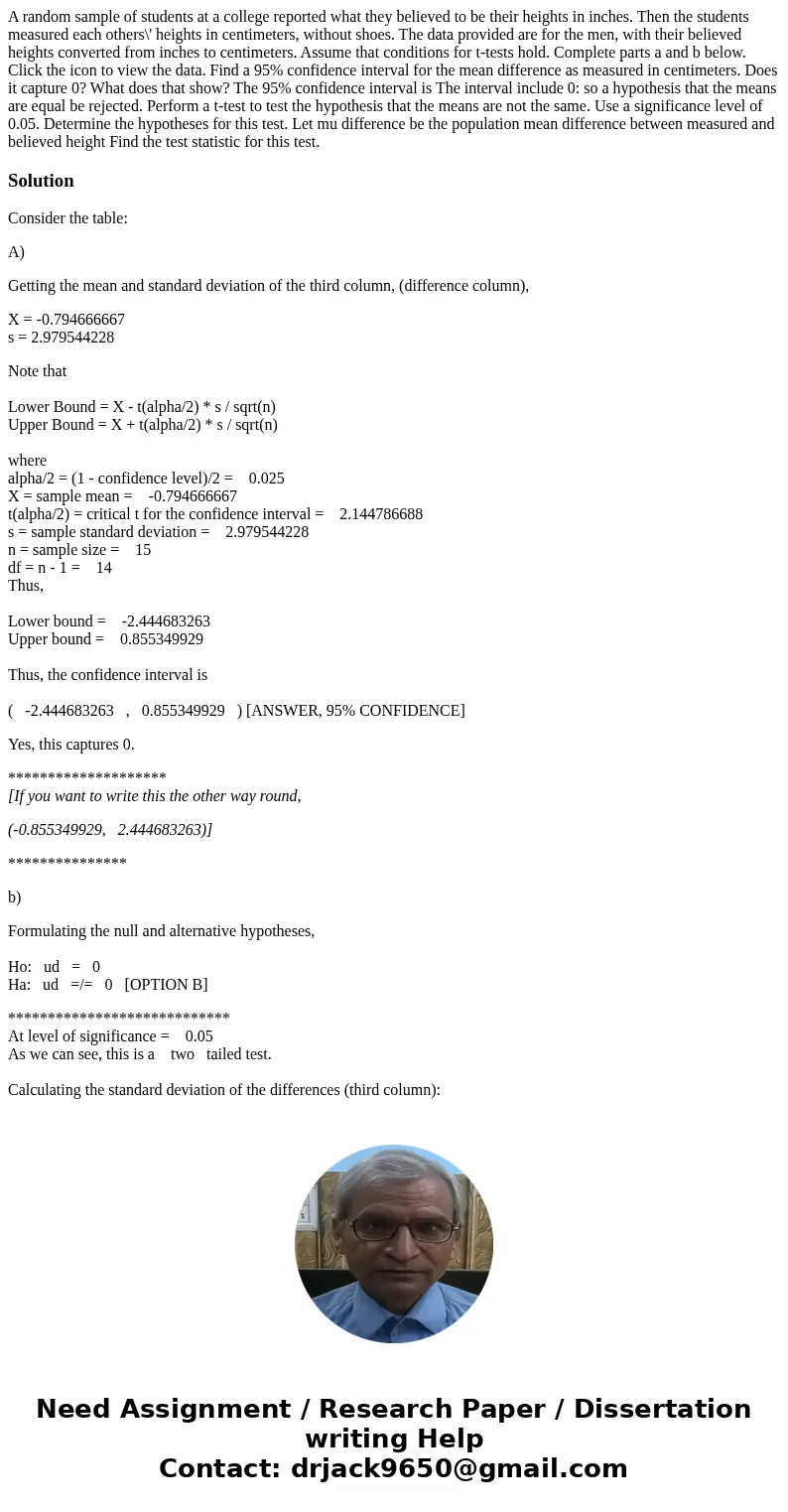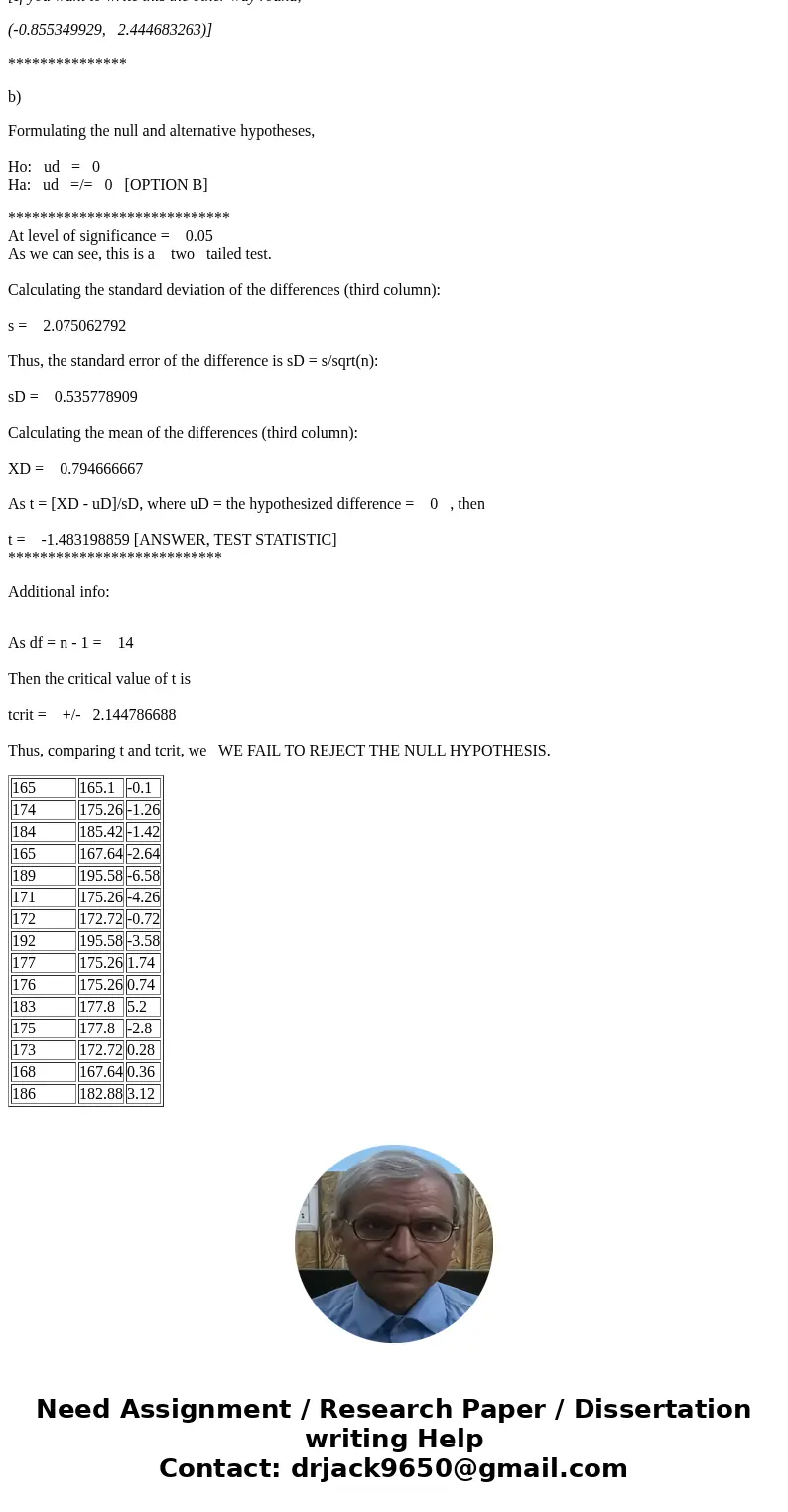A random sample of students at a college reported what they
Solution
Consider the table:
A)
Getting the mean and standard deviation of the third column, (difference column),
X = -0.794666667
s = 2.979544228
Note that
Lower Bound = X - t(alpha/2) * s / sqrt(n)
Upper Bound = X + t(alpha/2) * s / sqrt(n)
where
alpha/2 = (1 - confidence level)/2 = 0.025
X = sample mean = -0.794666667
t(alpha/2) = critical t for the confidence interval = 2.144786688
s = sample standard deviation = 2.979544228
n = sample size = 15
df = n - 1 = 14
Thus,
Lower bound = -2.444683263
Upper bound = 0.855349929
Thus, the confidence interval is
( -2.444683263 , 0.855349929 ) [ANSWER, 95% CONFIDENCE]
Yes, this captures 0.
********************
[If you want to write this the other way round,
(-0.855349929, 2.444683263)]
***************
b)
Formulating the null and alternative hypotheses,
Ho: ud = 0
Ha: ud =/= 0 [OPTION B]
****************************
At level of significance = 0.05
As we can see, this is a two tailed test.
Calculating the standard deviation of the differences (third column):
s = 2.075062792
Thus, the standard error of the difference is sD = s/sqrt(n):
sD = 0.535778909
Calculating the mean of the differences (third column):
XD = 0.794666667
As t = [XD - uD]/sD, where uD = the hypothesized difference = 0 , then
t = -1.483198859 [ANSWER, TEST STATISTIC]
***************************
Additional info:
As df = n - 1 = 14
Then the critical value of t is
tcrit = +/- 2.144786688
Thus, comparing t and tcrit, we WE FAIL TO REJECT THE NULL HYPOTHESIS.
| 165 | 165.1 | -0.1 |
| 174 | 175.26 | -1.26 |
| 184 | 185.42 | -1.42 |
| 165 | 167.64 | -2.64 |
| 189 | 195.58 | -6.58 |
| 171 | 175.26 | -4.26 |
| 172 | 172.72 | -0.72 |
| 192 | 195.58 | -3.58 |
| 177 | 175.26 | 1.74 |
| 176 | 175.26 | 0.74 |
| 183 | 177.8 | 5.2 |
| 175 | 177.8 | -2.8 |
| 173 | 172.72 | 0.28 |
| 168 | 167.64 | 0.36 |
| 186 | 182.88 | 3.12 |


 Homework Sourse
Homework Sourse